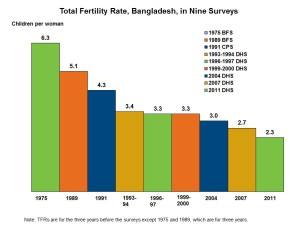The worst industrial accident in the history of Bangladesh has highlighted the scale of internal culture change necessary to legitimise the World Bank’s new goal to eliminate global poverty by 2030.
Ten days before the disaster, the Bank published its Bangladesh Development Update, recommending that 40,000 acres of land should be requisitioned to enable an exponential increase in the country’s Special Economic Zones. It endorses the transfer of these Zones from state to private ownership in order to reduce both the red tape of bureaucracy and the labour rigidity which creates “difficulties in hiring, firing, and training.”
The Rana Plaza building that collapsed on Wednesday with the loss of hundreds of lives is located in the Savar Export Processing Zone, one of the state-owned predecessors of Special Economic Zones. (CORRECTION 2nd May: the Rana Plaza is located in the same district – Savar – as the Dhaka EPZ)
Produced by the World Bank’s Poverty Reduction and Economic Management team for South Asia, the message of the Development Update is straightforward. “Bangladesh could become ‘the next China’…. with their wages being five times lower than their Chinese counterparts.”

Source: Population Reference Bureau
Notes about poverty reduction in the report are overwhelmed by its conventional macro-economic analysis, reminiscent of the findings of an annual IMF visit.
The Update fully acknowledges that the reputational risk of poor factory conditions in the garment sector in Bangladesh may deter foreign investors. But it offers no recommendations for action. Nor does it demonstrate any understanding of the knock-on effects of land acquisition for industrial development in a country striving to protect its food security on an ever-decreasing inventory of arable land.
All of this would be perfectly legitimate were it not for the fact that, over the last three weeks, the Bank’s publicity machine has pulled out all the stops in a rebranding exercise. The rather vague World Bank mission to reduce global poverty is to be ratcheted up to eliminate poverty, complete with a quantitative target.
The starting gun was fired in the April 2nd Georgetown University speech by World Bank president, Dr Jim Yong Kim. Under the heading “Within Our Grasp: A World Free of Poverty,” Dr Kim proposed “a common vision for the World Bank group” in which global poverty will be reduced to 3% by 2030.
This common vision goes further in identifying climate change unequivocally as the biggest risk to achieving the goal. “Climate change is not just an environmental challenge. It’s a fundamental threat to economic development and the fight against poverty,” said Dr Kim in an interview after his speech.
These radical ambitions were approved by the Joint Development Committee of the Bank and the IMF at the Washington spring meeting last Saturday. A strategy to deliver the new goals will be put to the World Bank board at its October annual meeting.
A good start for strategy planning might be to rewrite the Bangladesh Development Update with the new “common vision” governing the content.
Two fundamental changes will be needed. First, that the Herculean task of reducing poverty from over 30% to 3% by 2030 in Bangladesh can be achieved only by putting poverty policies at the top of the agenda; economic growth is necessary but insufficient to deliver a goal to eliminate poverty.
Second, that the impact of climate change is not just the biggest threat to poverty reduction in Bangladesh; for a significant percentage of the land mass, it’s an existential threat. The capital city of Dhaka is ranked as the world’s most vulnerable city in the 2013 Climate Change Risk Atlas published by Maplecroft.
A rewritten report might therefore question why the Bangladesh Bureau of Statistics suppressed the key indicator for hunger in publishing the results of its 2010 Household Survey. It would challenge whether government spending on social safety net programmes – a subject ignored in the original – should be more ambitious that the current target of 3% of GDP by 2014.
It would quantify the reduction in conventional growth brought about by the impact of climate change, estimate the cost of adaptation and speculate on who might foot the bill. It would contemplate the astronomic cost of extreme weather events, challenging international climate negotiators meeting in Bonn next week to get cracking with the idea of an international mechanism on loss and damage.
And, yes, the expansion of Special Economic Zones might feature as a means for providing decent work and a dignified path for displacement from the rural economy – subject of course to identifying the social and environmental impacts of land conversion. And the memory of those who died in the Rana Plaza will be honoured only through employment regulations which put people first, and profits second.
******
Bangladesh Development Update, April 2013 from World Bank Poverty Reduction and Economic Management team for South Asia
World Bank Group President Calls for a World Free of Poverty